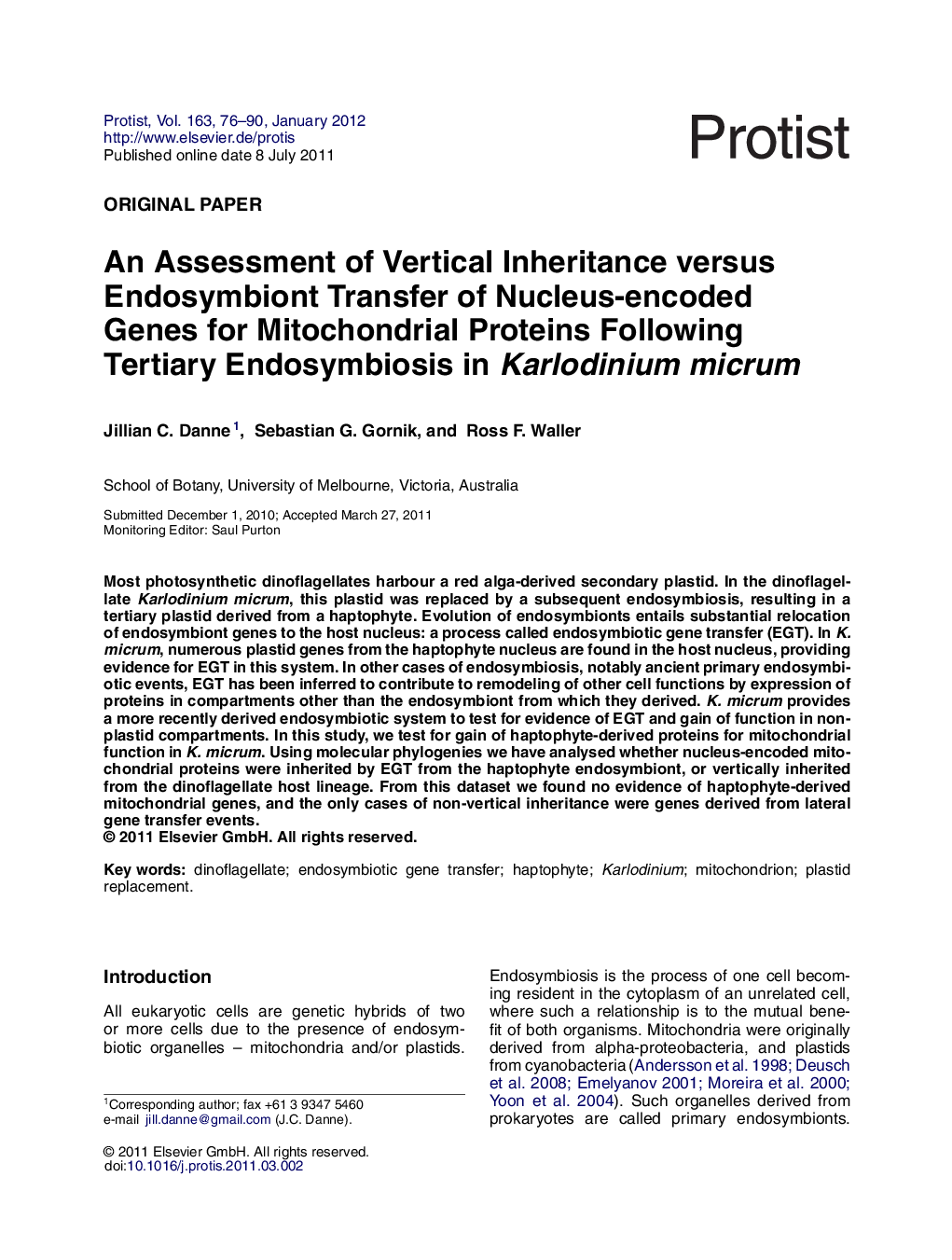| Article ID | Journal | Published Year | Pages | File Type |
|---|---|---|---|---|
| 10879099 | Protist | 2012 | 15 Pages |
Abstract
Most photosynthetic dinoflagellates harbour a red alga-derived secondary plastid. In the dinoflagellate Karlodinium micrum, this plastid was replaced by a subsequent endosymbiosis, resulting in a tertiary plastid derived from a haptophyte. Evolution of endosymbionts entails substantial relocation of endosymbiont genes to the host nucleus: a process called endosymbiotic gene transfer (EGT). In K. micrum, numerous plastid genes from the haptophyte nucleus are found in the host nucleus, providing evidence for EGT in this system. In other cases of endosymbiosis, notably ancient primary endosymbiotic events, EGT has been inferred to contribute to remodeling of other cell functions by expression of proteins in compartments other than the endosymbiont from which they derived. K. micrum provides a more recently derived endosymbiotic system to test for evidence of EGT and gain of function in non-plastid compartments. In this study, we test for gain of haptophyte-derived proteins for mitochondrial function in K. micrum. Using molecular phylogenies we have analysed whether nucleus-encoded mitochondrial proteins were inherited by EGT from the haptophyte endosymbiont, or vertically inherited from the dinoflagellate host lineage. From this dataset we found no evidence of haptophyte-derived mitochondrial genes, and the only cases of non-vertical inheritance were genes derived from lateral gene transfer events.
Related Topics
Life Sciences
Agricultural and Biological Sciences
Agricultural and Biological Sciences (General)
Authors
Jillian C. Danne, Sebastian G. Gornik, Ross F. Waller,
